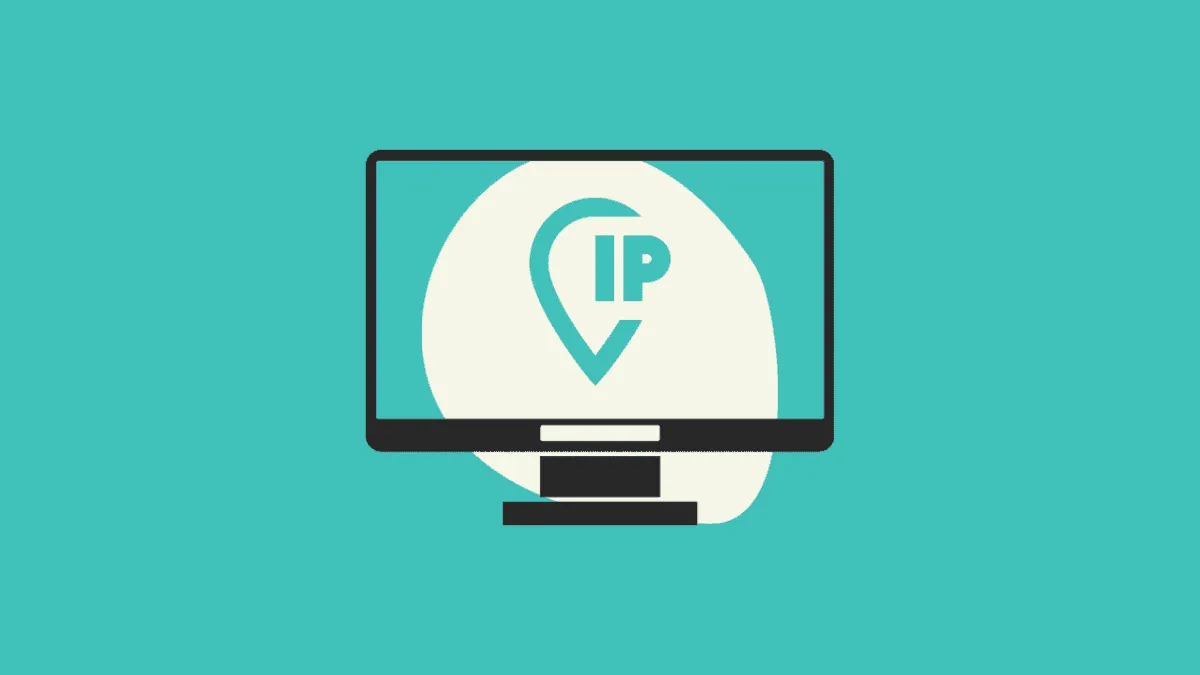An IP address, or Internet Protocol address, is a unique identifier assigned to each device on a network. Whether you're troubleshooting network issues, setting up a router, hosting a multiplayer game, or enabling file sharing, knowing your IP address is essential. In Windows 11, there are several effective methods to find both your public and private IP addresses.
Finding Your Private IP Address Using Windows Settings
The most straightforward way to locate your private IP address in Windows 11 is through the Settings app.
- Click on the network icon in the bottom-right corner of the taskbar. This icon represents your network connection status and may display as Wi-Fi or Ethernet.
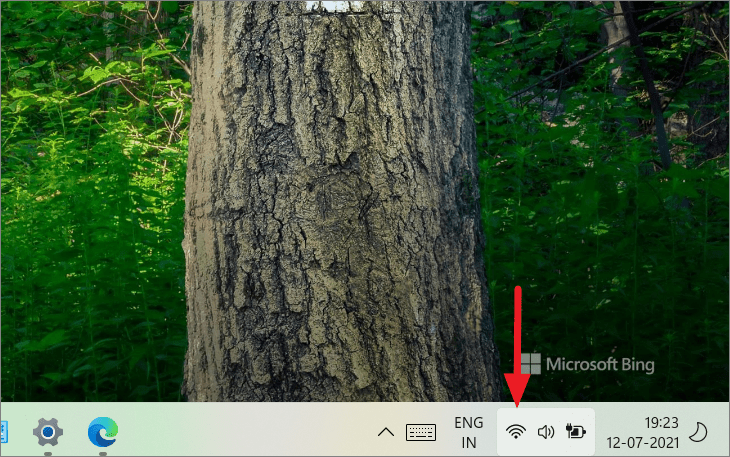
- In the quick settings menu that appears, click the arrow next to the Wi-Fi or Ethernet icon.
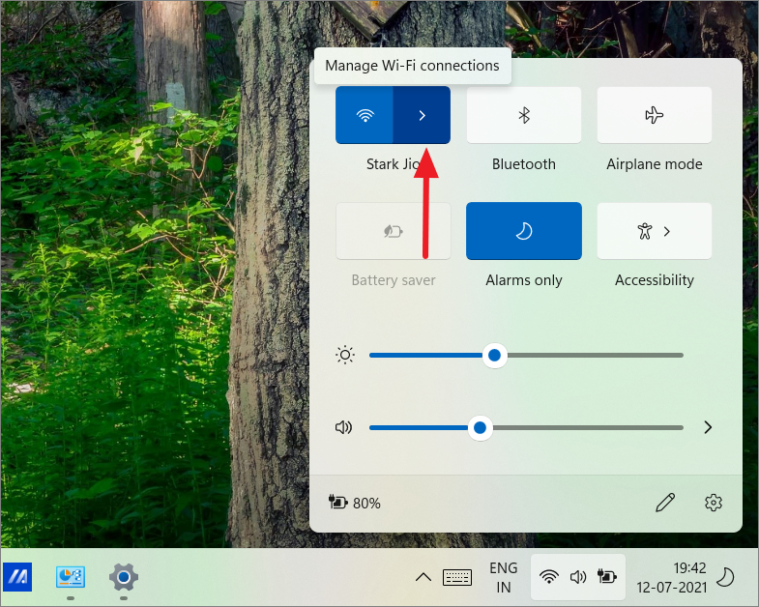
- Select your active network connection, then click on the Properties icon (an 'i' inside a circle), or right-click the connection and choose Properties.
- Scroll down the network properties page to find your IPv4 and IPv6 addresses.
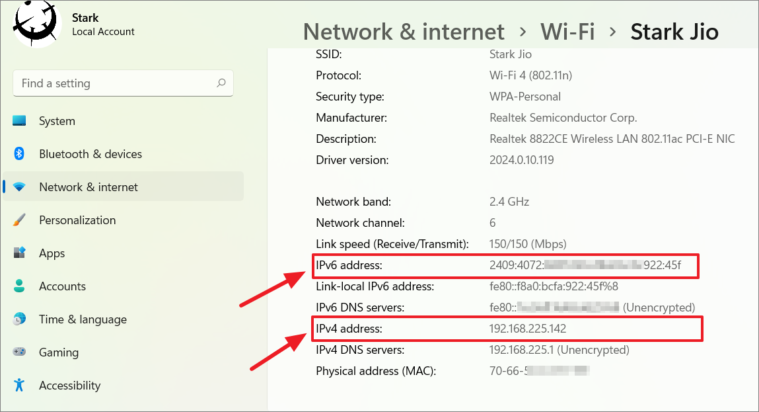
This page also displays additional network details like DNS settings, MAC address, and link speed.
Alternatively, you can navigate to Settings → Network & internet → Wi-Fi or Ethernet, and select your network to view its properties.
Finding Your Private IP Address Using the Control Panel
The Control Panel offers another way to find your private IP address through the Network and Sharing Center.
- Open the Windows search bar, type Control Panel, and select it from the results.
- Under the Network and Internet category, click on View network status and tasks.
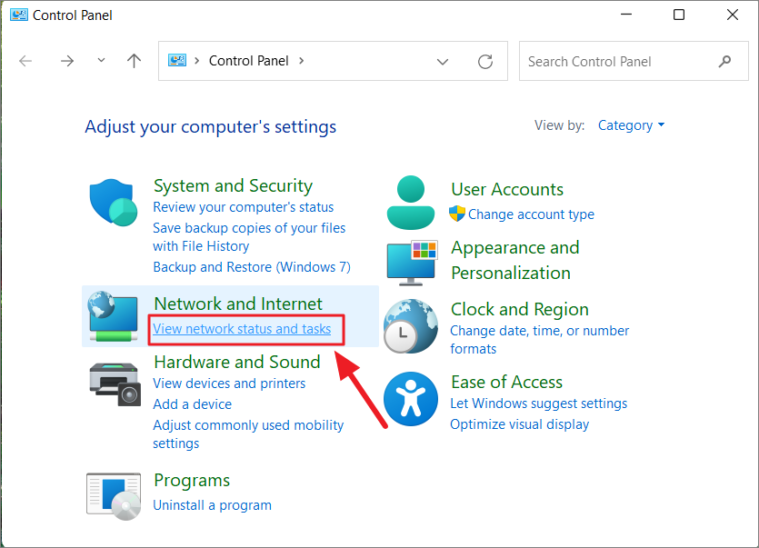
- In the Network and Sharing Center, click on your network connection next to Connections.

- In the status window that appears, click the Details button.
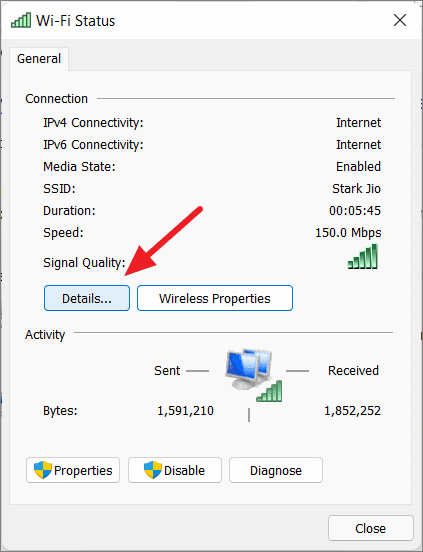
The Network Connection Details window will display your IPv4 and IPv6 addresses, along with other network information.
You can also click on Change adapter settings in the left sidebar to view all network adapters. Right-click your active connection, select Status, and then click Details to see your IP address.

Finding Your Private IP Address in Task Manager
Task Manager provides a quick way to access your IP address information.
- Right-click the Windows Start button on the taskbar and select Task Manager.

- In Task Manager, switch to the Performance tab.
- Click on your network connection (e.g., Wi-Fi or Ethernet) in the left pane.

- Your IPv4 and IPv6 addresses will be displayed in the right pane, along with other network statistics.
Finding Your IP Address Using Command Prompt
The Command Prompt offers a simple way to find your IP address using the ipconfig command.
- Press Windows key + R to open the Run dialog, type cmd, and click OK.

- In the Command Prompt window, type ipconfig and press Enter.
ipconfig
Your active network adapter's information will be displayed, showing your IPv4 and IPv6 addresses.
For detailed network information, type ipconfig /all and press Enter.
ipconfig /all
Finding Your IP Address Using PowerShell
Windows PowerShell provides powerful commands to retrieve network information.
- Search for PowerShell in the Windows search bar and open it.

- In the PowerShell window, type Get-NetIPConfiguration and press Enter.
Get-NetIPConfiguration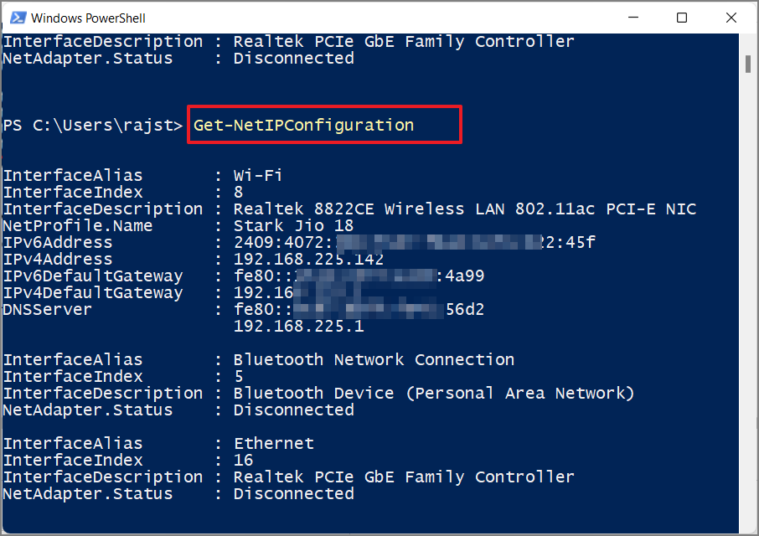
This command will display IP configuration details for all network adapters on your system.
Finding Your IP Address in System Information
The System Information tool provides detailed hardware and software information, including your IP address.
- Press Windows key + R, type msinfo32, and press Enter.
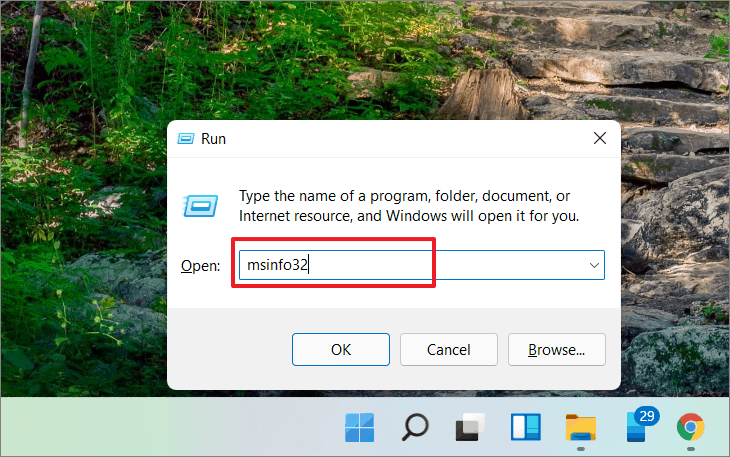
- In the System Information window, expand
Components→Network→Adapterin the left pane. - Scroll through the list to find your active network adapter.
- Your IP address is listed next to IP Address.
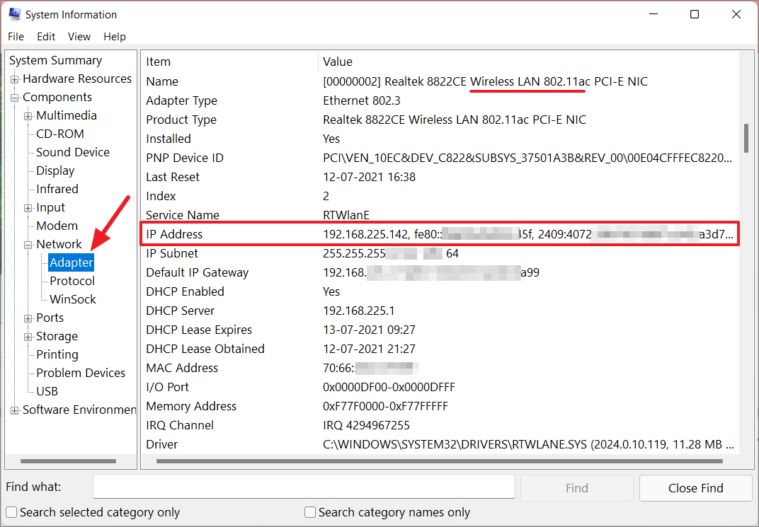
If both IPv4 and IPv6 are in use, they will be displayed here.
Finding Your Public IP Address Using a Web Browser
Your public IP address is assigned by your Internet Service Provider (ISP) and is used for communication over the internet. To find your public IP address:
- Open a web browser and go to a search engine like Google or Bing.
- Type "What is my IP address" into the search bar and press Enter.
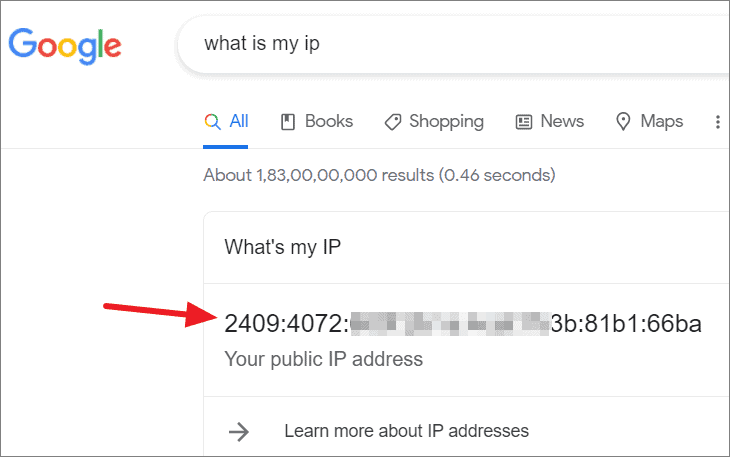
Your public IP address will be displayed at the top of the search results.
You can also visit websites like whatismyipaddress.com or whatismyip.com for more detailed information.
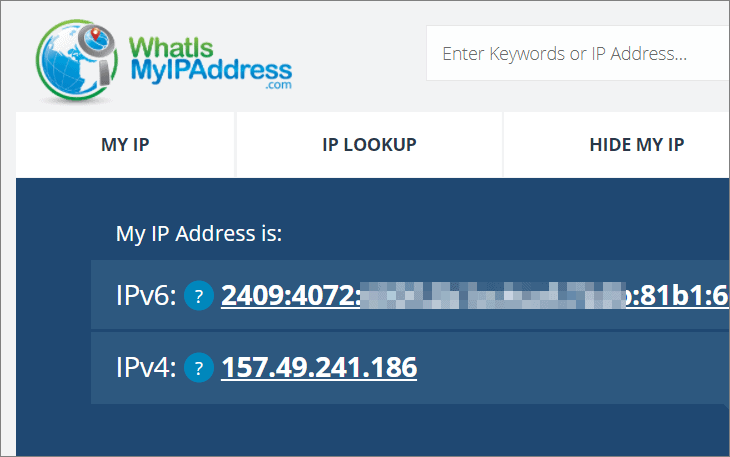
Understanding IP Address Types and Versions
It's important to understand the differences between IP address types and versions.
Private IP addresses are used for communication within a local network, such as a home or office network. Routers assign private IP addresses to devices connected to them.
Public IP addresses are used for communication over the internet and are assigned by your ISP. They can be static or dynamic.
IP Address Versions
- IPv4: Uses a 32-bit address format, supporting approximately 4.3 billion addresses. It's displayed as four numbers separated by periods, each ranging from 0 to 255.
Example: 192.168.1.1 - IPv6: Uses a 128-bit address format, allowing for a vast number of unique addresses. It's represented by eight groups of four hexadecimal digits separated by colons.
Example: 2001:0db8:85a3:0000:0000:8a2e:0370:7334
Due to the exhaustion of IPv4 addresses, IPv6 is increasingly being adopted. Many systems use both IPv4 and IPv6 simultaneously.
Finding IP Addresses of All Devices on Your Local Network
If you need to find the IP addresses of other devices on your local network, you can use the arp command in Command Prompt.
- Open Command Prompt by pressing Windows key + R, typing cmd, and pressing Enter.
- Type arp -a and press Enter.
arp -a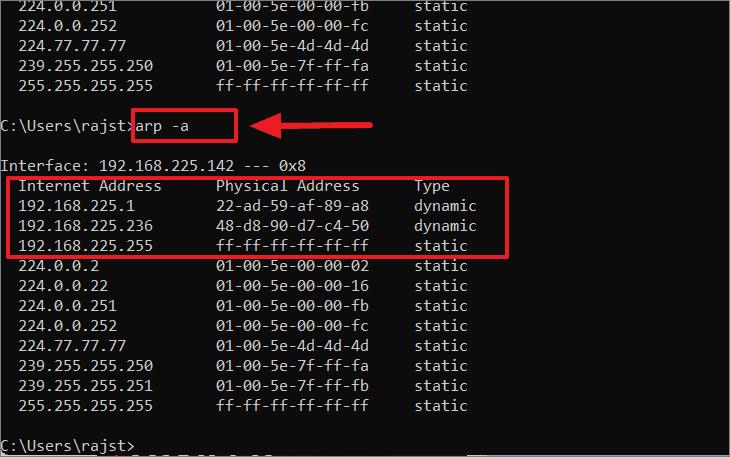
This command will list all active IP addresses and their corresponding MAC addresses on your local network.
Being able to find your IP address is crucial for managing network connections and troubleshooting issues. With these methods, you can easily locate both your private and public IP addresses in Windows 11.

